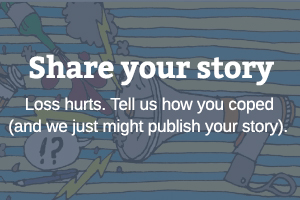In the aftermath of your loved one’s death, you are likely to receive a variety of sympathy cards and notes. They may include everything from a five-page letter, filled with precious personal anecdotes, to a standard-issue Hallmark card to a text message. But how do you acknowledge these expressions of sympathy? And how soon should that be done? To answer those questions, Modern Loss spoke with Rosalie Maggio, the author of “How to Say It: Choice Words, Phrases, Sentences & Paragraphs for Every Occasion” and “Great Letters for Every Occasion,” among many other books on communications.
Related
Do letters of condolences need to be acknowledged?
If you receive commercial sympathy cards simply signed with a name, no. Otherwise, generally yes. Most funeral establishments or crematoria furnish notecard-size thank-you notes.
If you have only a handful of letters to respond to (for example, sometimes a parent of great age will leave few close friends behind), handwrite a thank you. In the case of someone who was well known in a locale and you’ve received dozens, perhaps even hundreds, of cards and letters, have acknowledgments printed up with your name, so that you don’t even have to sign them; get someone to help you address them. (In the latter case, you might set aside a handful of meaningful or very special messages to respond to later when you are able to do so.)
Can you provide some examples of appropriate letters of acknowledgement?
When you have only a few cards and letters to acknowledge, use the funeral establishment cards provided for the purpose and write something like: “The family of [NAME] thanks you for your kind expression of sympathy. It truly helped to know we were in your thoughts [and prayers] during these difficult days.” The simplest and possibly most common phrasing is: “The family of [NAME] wishes to acknowledge with gratitude your kind expression of sympathy.”
An interim note, either written in your name by helpful friends or printed on notecards with the recipient’s name filled in, would be: “Dear [NAME], This is to acknowledge your kind expression of sympathy and the lovely floral arrangement you sent on the occasion of [NAME]’s death. [NAME] will be writing you a personal note as soon as she/he can. In the meantime, he/she appreciates your friendship and concern.”
Acknowledgments that go to hundreds of people are generally printed and use some combination of the above phrases.
Remember that in our culture at least, time-honored rituals of death ease us through the unthinkable. Much of what we do during these times is almost rote. Everyone knows how difficult a death is. No, these notes are not original or memorable. They simply serve the purpose of letting the recipient know that you received and appreciated their card. Again, if anyone stands out particularly, make a note to write them later, when you can.
When should acknowledgements be sent out?
Nobody will expect you to do this for some time, so don’t worry if you can’t get yourself to your writing place for weeks or months, but some people deserve a personal reply.
For Maggio’s advice on writing condolence notes, click here. For her compilation of quotations about grief, click here.












